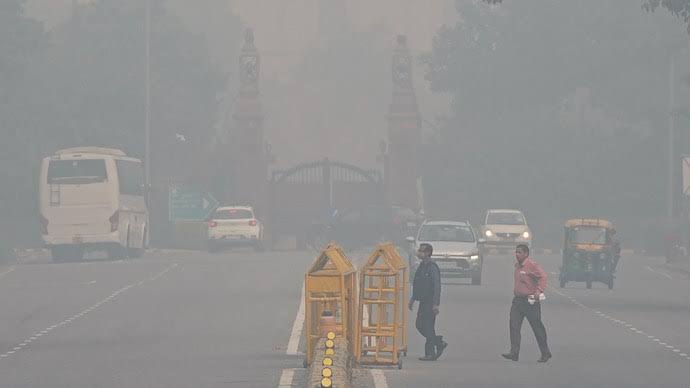Delhi, the city of kings and emperors, pulsates with a chaotic charm. Its ancient monuments whisper tales of grandeur, while modern skyscrapers pierce the sky, their steel and glass reflecting the ambition of a nation on the rise. Yet, beneath this veneer of progress lurks a silent killer – air pollution, a specter choking the capital in a toxic embrace.
Every winter, a familiar dread settles over the city. A noxious cocktail of vehicle exhaust, industrial fumes, and construction dust shrouds Delhi in a grey haze, transforming its vibrant streets into dystopian alleyways. This “airpocalypse,” as it’s aptly dubbed, renders iconic landmarks invisible and casts a pall over public health.

The consequences are stark. Respiratory illnesses, from wheezing coughs to debilitating lung diseases, surge. Children, with their developing lungs, are particularly vulnerable. Even cognitive decline has been linked to chronic exposure to Delhi’s toxic air. Life becomes a daily negotiation with inhalers and air purifiers, a constant reminder of the invisible enemy lurking outside.
But Delhi, a city forged in resilience, refuses to succumb. A wave of citizen activism has risen, demanding a right to breathe. Groups like “Clean Air Delhi” and “Let India Breathe” have mobilized communities, organizing awareness campaigns and legal challenges against lax government policies.
The government, too, has begun to stir. The odd-even car rationing scheme, though controversial, aims to curb vehicular emissions. The emphasis on electric mobility offers a glimmer of hope. Green spaces are being revitalized, and a renewed focus on public transportation promises to reduce dependence on private vehicles.
Yet, the battle is far from over. Tackling Delhi’s airpocalypse requires a multi-pronged approach. Stringent emission regulations for industries, coupled with robust monitoring and enforcement, are crucial. Sustainable construction practices and stricter dust control measures can plug another leak in the city’s polluted lungs.
But the most potent weapon lies in the hands of its citizens. Choosing bicycles over cars, opting for local produce to reduce transportation emissions, and demanding accountability from local representatives – these everyday actions collectively form a mighty shield against the airpocalypse.
Delhi’s fight for clean air is a microcosm of a global struggle. Its success paves the way for other cities grappling with similar challenges. As the world watches, Delhi must choose – succumb to the toxic storm or rise, a breath at a time, towards a future where its children can see the sun pierce the smog and hope fills their lungs, not dust.
*Student, BAJMC, 3 Sem.

